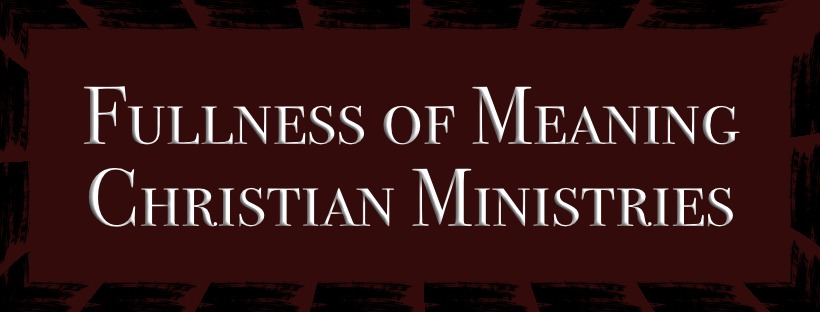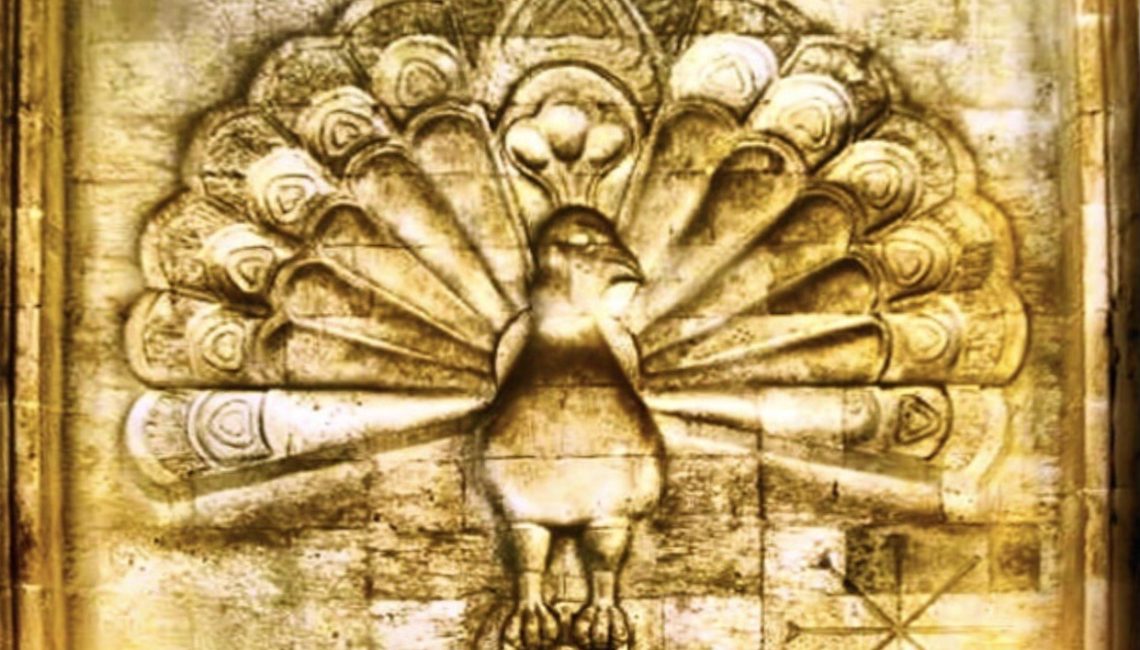Look at the phrase: “The Patience of Job”. Why is this such a catch phrase for the ages? It is because Job exercised “patience” in God’s will….not in a chaotic action by an arbitrary ‘evil’ force. Otherwise, we would have a dualistic ‘faith’, i.e., ‘believing’ that either good or bad ‘might’ win. Using reason, this IS an insane ‘kind’ of faith. Sadly, in our Christian culture, this is where we’re at. Therefore, why not ‘believe’ in the Devil if he is the ‘other’ lord of action, force, dynamism in this world? Optionally, “dualism”, -i.e., good vs. evil, renders theological insanity within the Christian church.
Examples go as follows for ‘dualism’ in the Church: “Eugene died in a horrible car crash – God would never have this happen”. “Those Christians in the train wreck died not at the hand of God”. Etc. So, where is God? Where is the Hand, Intent, Providence, Predeterministic God of the Bible? Our Biblical answers to our modern day catastrophes can be found in the ancient but timeless Word of God: The Evil (or The Satan found in Job) is a *quantity* brought by The LORD (cf.Job 42:11). Job’s family comforted Job ‘’from all the evil that the LORD had brought upon him (Job)’’. Again, the *agent* of destruction is The Satan. The Satan is found in the first two chapters of Job as being ‘directed’ to Job. The LORD ‘limits’ Job’s destruction at the ‘borderline of death’ —but everything else is within the “legal limitations of destruction by Satan”.
Dr. Tur Sinai in his book, “The Book of Job”, makes it clear that “Satan” did not have the suffix “-an” originally–as in “Shat-an” or “Sat-an”. Rather, this added suffixial “-an” came later to make it personal…i.e., “THE doer of disparaging- destroying, etc.” Such was NOT the case in ‘ITS’ original and oldest Semetic form as in Shat, which meant “to disparage”. Here, we must contrast “Shat/ SHT” from “Shatan, Satan, Shaytan”. For it was a social convention in assimilating with the neo-Babylonians and Persians that the Jews in Neo-Babylonian and Persian captivity adopt the ideas of the Babylonian and Persian ‘verbs of motion’. These approaches, for sure, gave power to the quality of action as “the mover, intender, actor upon, etc.{ cf to footnote 1}”. This was not so in the earlier conventions of language concerning a Satan – i.e., SHT or Shat. ”Shat/SHT” was not a personalized doer, rather, SHT was the *agency* by which destruction occurred in the context of the story. It was the INTENDER that was the Prima Causa to the agency.
I find it interesting that the ancient usage of “SHAT” or “SHT”, i.e., “to disparage”, is the verb which means ‘to belittle to nothing; to make someone feel like nothing’. It is the VERY *picture* of the New Testament Greek word“MISEO” which is used in Romans 9 to mean “hated” in the sense of “reduced to non-importance, dismiss (hence the Greek: “Miseo”, not count (at least, for now)”. It is little things like this (from Sumerian to Older Hebrew/ Semetic to New Testament Greek semiotic/ endonymic agreement) that give me the rest in the consistent Theology of a timeless God and His agents. This is why it is so important to study the ancient pictographs of the old world – for when the pictograph went away for ‘advancing societies’ the picture went
away as to the IDEA to the word. Yet, not all is lost! Much study can ‘reconstruct’ the Sovereign Word of God which holds us all together.
Another highly interesting point that I have found in Scripture is that “SATAN” is used as the agent OF God and Later ‘dismissed’ into non-existence for the Story’s sake.
Zechariah 3:1 makes it clear that Satan was an adversary innately while he was *at the right hand of God*. And, yes, Satan was *rebuked* because Zecharia’s prophetic *Joshua (i.e., the archetypical Jesus found here in Zecharia’s prophecy)* would be tempted and overcome. Was the act of overcoming sin by the prophesied Joshua/ Jesus THE rebuke, THE dismissal of Satan in this timeless-a-tempo prophetical scenario? I say, YES. Zechariah lived nearly a thousand years after Joshua and YSHUA is both Jesus’ name and Joshua’s name.
This development of *the word and idea* is encased in a web of traditions that I plan on solving by going back to the very origin of Word and Idea.
WORD AND IDEA
Let’s start with the unbelievable comparative philologies and threading to both THE WORD “Ba’al – zebub’ and the Idea of what the “Lord of the Flies” really meant (*repulsion, offense, directives due to such repulsion, hating yet needing, etc.) to the ancient Philistines — probably an ancient Agean culture with its 5 main cities encamped in old Philistia (Canaan — now Israel).
Words related to the birth of the Name, “SHT”
Here are some of humankind’s oldest languages (nearing the Mother of all of our languages) with their similarities in a composite sketch for “Satan”. KEEP IN MIND, WE ARE DEALING WITH PICTOGRAPHIC SOCIETIES WHICH ‘DEPICTED’ STORIES WITHIN THEIR ‘WORDS’…SOMETIME, MANY EVENTS ARE SEEN WITHIN ONE PICTOGRAPHIC WORD.
Proto Uralic Saksa – filthy; unclean/ SIT – to bind/ SITTA – (slang) shit/ SIJTE – Grove – offering place (garden)/ SIB (as in the Philistine “FLY” – Lord of the Flies) ‘to cast a spell”
Sumerian —- (all Sumerian words represented here for 1) filthy 2) bind 3) (slang) ‘shit’ 4) Grove/ Garden/’offering place 5) ‘fly’ (as pestilence) are cognates to the Proto Uralic, Ugric, and Finnic (Finnish) — i.e., Sumerian matches the P.U., Ugric, and Finnish — even nearing in spelling (Grimm’s equivalents)
Ugric (same as above)
Finnish (same as above)
*Conclusive ideas:
1)There was ONE STORY that was CARRIED THROUGH THESE PICTOGRAMS and germaine to the entire old literate world spanning from the Saami (Old Finnish) culture to the Ural Mountain ranges to southern Mesopotamian Sumeria. This WAS the World.
2)The ‘nature’ of “the Satan” is to tempt, but, the mover of the agency of temptation is the Lord Himself. Keep in mind, the suffix “-an” for Satan was not Hebrew, rather, a loan suffix given by a corrupted Neo-Babylonian and Persian idea which they corrupted from a much earlier form –i.e., SHT/ Shat..
3)When the pictograph went away the picture went away as to the IDEA to the word.
4)To think that “SATAN” came from its first beginnings as the literal “shit” and where we have taken it into some ‘rogue’ agent that can fight the Lord’s will IS “satanic”..lol
5) The Evil (or The Satan found here in Job) is a *quantity* brought by The LORD (cf.Job 42:11). Job’s family comforted Job ‘’from all the evil that the LORD had brought upon him (Job)’’. Again, the *agent* of destruction is The Satan. The Satan is found in the first two chapters of Job as being ‘directed’ to Job. The LORD ‘limits’ Job’s destruction at the ‘borderline of death’ —but everything else is within the “legal limitations of destruction by Satan”.
Footnote #1 The Arabic borrowed this later meaning, Shaytan or Satan, and once again, loaned it into the later medieval Hebrew language – which reinforced it as a Word of Assimilation into the Hebrew Culture. Yes, the Hebrew translators could have used “SHT” for a more contextually fitting “SHT” – i.e., “satan” – versus our modern ‘rogue actor of evil’. This is, for sure is a result of the Babylonian influence on the Hebrew Pharisees in Babylon which ‘borrowed’ this word and I believe has caused our modern Church to be ‘dualistic’ and corrupt.




